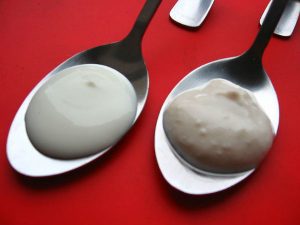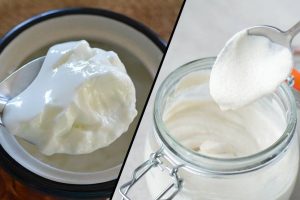The Open Magazine
Delicious Keto Recipes for a healthy lifestyle
What is the difference between yoghurt and curd. If you’re unaware of what differentiates yoghurt from curd, this article is for you! Discover more about these dairy products with our clear and informative guide.
weight loss recipe: Can We Eat Moong Dal On A Keto Diet? Sprouted Moong Dal Recipe
Yoghurt and curd may look similar, but there are actually some important differences between the two products. Understanding what separates yoghurt and curd can help you choose the right dairy product for your needs.

What is Yoghurt?
Yoghurt is a dairy product that is made by adding bacteria to milk. This process causes the milk to thicken and gives yoghurt its distinctive tangy taste. Yoghurt can be consumed plain or sweetened with fruit and other flavours. An important factor to note about yoghurt is that it contains live active cultures which, when consumed regularly, can provide health benefits.
What is Curd?
Curd is a traditional dairy product made of sour milk. Unlike yoghurt, it does not contain live bacterial cultures and therefore does not provide any health benefits. Although the taste of Both is similar, they are different in their consistency since curd is generally much thicker than yoghurt. In addition, whereas yoghurt can be consumed on its own or as part of other dishes, the curd is usually eaten as a standalone dish with some kind of accompaniment like sugar or salt.
Difference between yoghurt and curd
Both have fundamental differences. Yoghurt is made essentially with milk and a starter containing active cultures that cause fermentation, which thickens the milk and produces a subtly sweet flavour. Curd, on the other hand, is made from sour milk that has been simply drained with no added starter bacteria to it. As such, yoghurt offers essential probiotics while curd does not contain any live cultures or beneficial bacteria. Additionally, yoghurt is sometimes sweetened with sugar or fruit but is mostly just slightly tart and creamy in taste, whereas curd can be either sweet or sour depending on how long it has been left to ferment.

Health Benefits
Yoghurt is highly beneficial to health as it contains essential probiotics that help promote good digestive and overall health. Furthermore, it also contains calcium which helps strengthen bones and teeth, while lower-fat varieties are a great source of protein. Curd has fewer benefits than yoghurt, as it does not contain any active cultures or beneficial bacteria. However, it may still offer other benefits such as providing new proteins that can be used by the body, aiding digestion and helping to regulate cholesterol levels.
Serving Suggestions
Yoghurt and curd can be served in a variety of ways. Yoghurt can be enjoyed on its own, either plain or flavoured, as a smoothie, as part of a bowl of fruit and muesli, as frozen yoghurt or in savoury dishes to add flavour and texture. Curd can also be enjoyed plain but is also great when sweetened with honey or used as the base for puddings and desserts. It’s also popular as an accompaniment to both main dishes and snacks such as rice, fruits and sandwiches.
